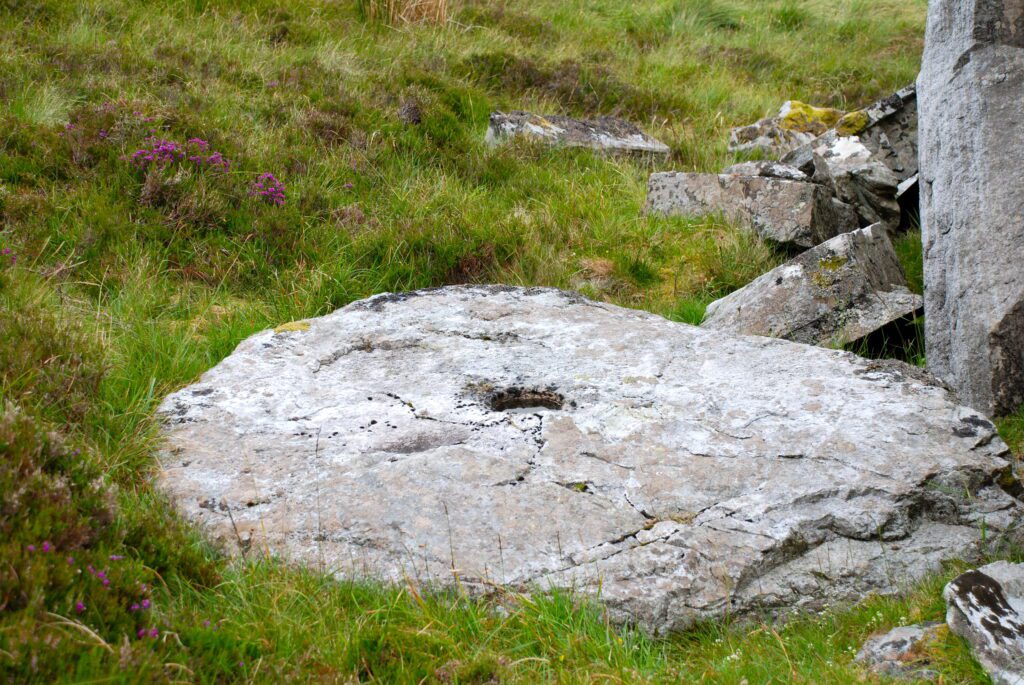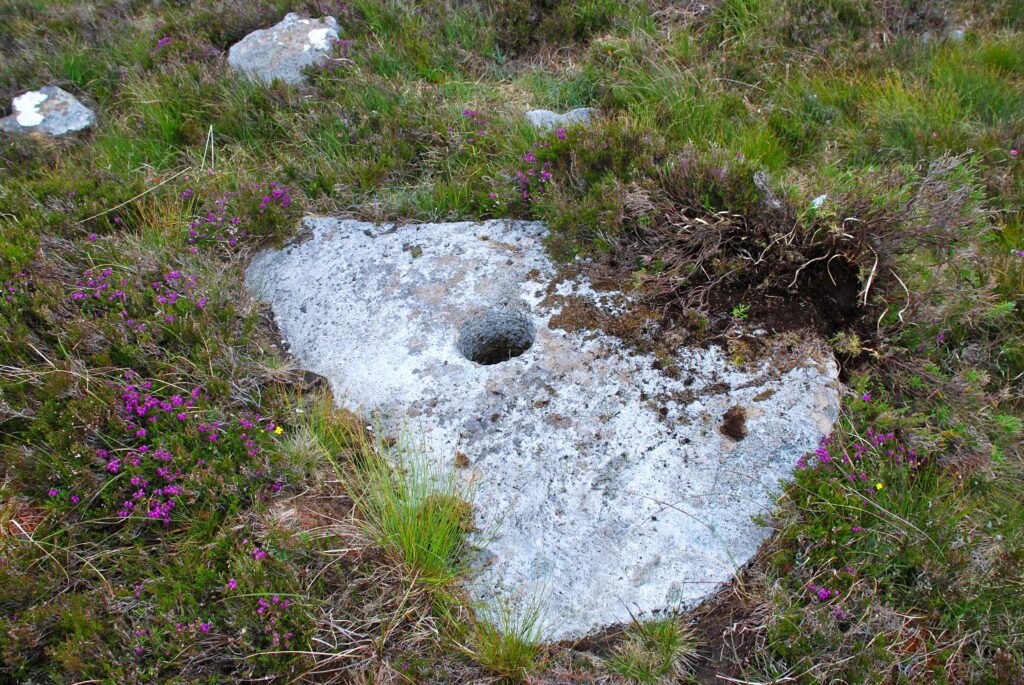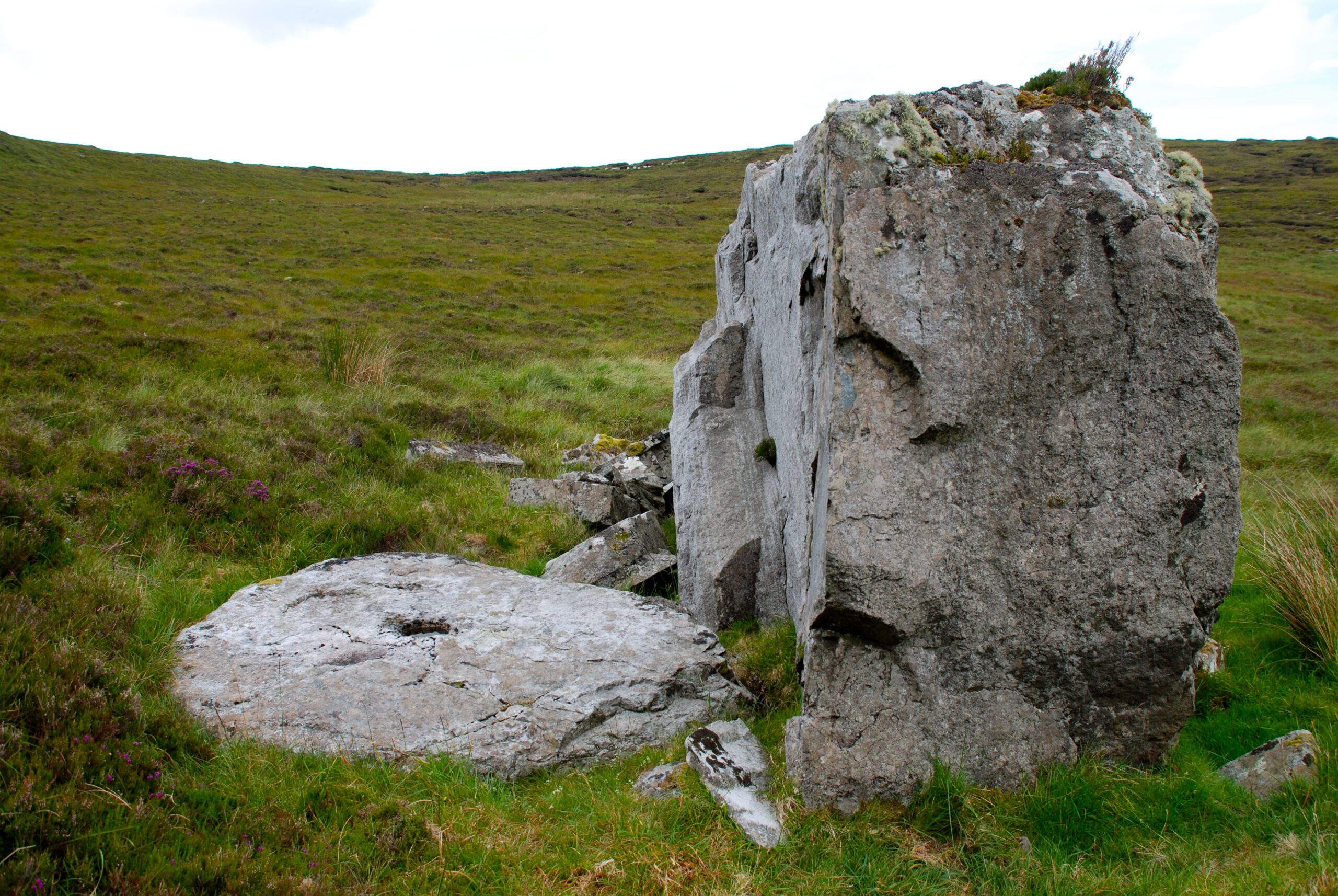Muckish Mountain, part of the Ards Quartzite Formation outside Creeslough in County Donegal, holds a rich history that spans millions of years and ties into Ireland’s industrial past. This formation, known as Dalradian Quartzite, was formed around 700 million years ago. It consists of nearly pure quartz, making it one of the hardest types of stone. But what makes Muckish truly unique is not just its geological history—it’s also known for its connection to millstone production.

What is a Millstone?
Millstones were essential tools in both windmills and watermills during post-medieval times. They were used to grind various cereals like oats, wheat, maize, and barley into meal, flour, or fodder for animals. A pair of millstones was needed for the grinding process: a stationary “bed stone” on the bottom and a rotating “runner stone” on top. Grain was fed through a hole in the upper stone, which rotated, grinding the grain between the two stones. This grinding action was powered either by wind or water.

Millstone Quarry at Muckish Mountain
The northern side of Muckish Mountain is home to a quartzite block field, the source of stone for the millstones produced in this area. Unlike many other stone formations, this block field wasn’t shaped by glaciers but by landslides from the mountain’s summit. Large, rectangular quartzite blocks naturally broke away due to fractures in the bedrock, making them ideal for cutting into millstones.
Interestingly, Muckish Mountain is one of only two places in Ireland where millstones were made from scree blocks that had fallen from a mountainous outcrop. The process of crafting a millstone involved marking the rough shape on one side of the block using a large compass. Natural fractures in the stone were used to make it easier to separate the millstone from the rest of the block.

A Glimpse Into the Past
Several millstones have been discovered on Muckish, ranging in size from 1.38m to 1.76m in diameter. These findings suggest that millstone production took place as far back as the 17th century. Two medieval millstones made from Muckish quartzite have even been found at Ray Old Church, approximately 8km from the mountain, indicating the long-standing use of this quartzite in millstone production.
The Journey Downhill
One mystery remains: how were these massive stones transported from the quarry? Historical records don’t offer a clear answer, but it’s likely that a simple yet effective technique was used. A sledge, known as a “slype,” was probably employed. The millstone would be placed on the slype, and horses would pull it down the mountain—one horse leading and another behind to act as a brake.
Muckish and the Linen Industry
By the 19th century, Donegal’s linen industry was thriving, and it’s believed that some of the millstones from Muckish were used as “edge runner stones.” These were cylindrical stones that were rolled to crush flax, a crucial step in preparing the plant for linen production.

The Stonemasons of Muckish
The stonemasons who worked at Muckish Mountain had a deep connection to the quartzite they shaped. Their work wasn’t just a job—it was a craft passed down through generations. Their knowledge of how to work with this tough stone played a vital role in the region’s industrial history.
Conclusion
Muckish Mountain’s history, both geological and industrial, tells the story of how nature and human ingenuity intertwined. From the formation of its quartzite 700 million years ago to the skilled craftsmanship of millstone production, Muckish holds a fascinating piece of Ireland’s past. Today, it stands as a testament to the hardworking stonemasons and the important role millstones played in Irish industry.
You can watch an interview with Creeslough man Manus Mc Fadden with Joe from Lesser Spotted Ulster about the Mill Wheels on Muckish. You will also see some familiar local faces including Gerald Duffy, James Duffy, Mary Lafferty and more. The clip about the mill stones is a few minutes into the clip.

